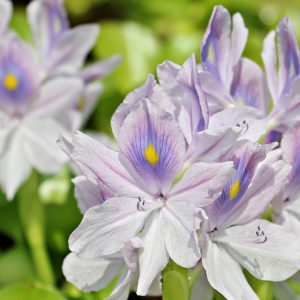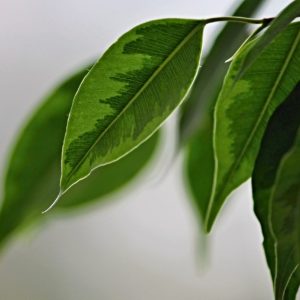Environmental scientist Bill Wolverton was hired by the military in the late 1960s, and tasked with cleaning up environmental messes left by chemical warfare. While working at a test center in Florida he discovered that swamp plants were effective at cleaning up Agent Orange which had polluted local waterways after government testing near Eglin Air Force Base.

Later, NASA hired Wolverton to design a plant-based wastewater cleaning system, and to this day his design (which replaces a traditional septic system with water hyacinths) remains in use.
As Wolverton and NASA’s research turned from water purification to air purification, American construction was turning away from natural materials and had begun using more synthetic materials to build, well, everything. This made the research NASA was funding critically important.
Today’s modern construction creates air-tight living spaces where harmful VOCs (Volatile Organic Compounds) have no place to escape once they are emitted from the materials used to build the spaces where we live and work.
The problem is that with improved construction techniques and an air-tight seal keeping weather out, the only thing left inside to absorb the VOCs is us.
Sick Building Syndrome is the result, and as the name suggests, this malady includes a non-specific set of symptoms which are the product of harmful VOCs in the air being absorbed by our bodies.
Enter NASA and Wolverton’s research, which produced a 1989 report in which Wolverton succinctly stated what many people now know: “If man is to move into closed environments, on Earth or in space, he must take along nature’s life support system.”
That life support system is plants.
The Science Behind Plants as Effective Air Purifiers

The science which proved plants to be effective air purifiers in closed environments is straightforward.
NASA constructed a living space of entirely synthetic materials, which would be occupied by one person, and a number of house plants. Before the plants were introduced to the “BioHome,” as it was called, anyone who entered the space experienced eye itchiness and burning. They also found it difficult to breathe freely.
The VOC levels were measured before and after plants were introduced, and the difference was so dramatic, that it surprised even the scientists. The houseplants effectively filtered the air, removing nearly all of the volatile organic compounds which were causing discomfort. The negative health symptoms of occupants disappeared entirely when the house plants were present.
Other Than Physical Health, Why Add Plants to Your Office?
Adding houseplants to the space where you live and work isn’t just good for your health. There are several other benefits that make the addition of plants a wise decision.
Productivity
Want to get more done? According to a Washington State University study you may get 12% more accomplished if you’re working on a computer in a room filled with plants, than if you’re working on a computer in a room without plants. This 2014 study observed even better results, reporting that the productivity boost from working around plants could be 14%. Not only is it healthy to add plants to your office, it’s just good business.
Creativity
An eight month study by Dr. Robert Ulrich of Texas A&M University revealed that the presence of flowers and plants in a workplace could have a positive impact on worker creativity. Both men and women demonstrated more innovative thinking in the environment with flowers and plants present, with Dr. Ulrich summarizing the results of his study in this way: “People’s productivity, in the form of innovation and creative problem solving, improved–which in certain circumstances could be the difference between mild and great business success.”
Mental Health
While it is only obliquely related, this fascinating study by Stanford researchers reported in this article from The New York Times found that walking in green space could improve mental health when compared to walking for the same amount of time in an urban environment.
I’d argue that an office filled with lush green plants and natural light could have a similar effect on employee health and well-being. Some companies like Microsoft are even growing produce for their salad bar right in their employee cafe, creating a vibrant green space for their workers and providing employees with the freshest possible food.
Don’t Let Your Black Thumb Stop You
There’s good news for workers who want to add some green to their office space, but fear the plants will be doomed to wilt under their black thumb. There are many types of office plants that are easy to grow, and you can add low-maintenance houseplants that can improve your health and productivity for just a couple of bucks.